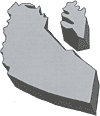 |
Exploring Northwest Territories Literacies
by Helen Balanoff
 In recent years, researchers like
Barton and Hamilton, Heath,
Cairney, and Street have
examined what literacy means to
different individuals and groups, and
how people value literacy and use it in
their every day lives. These studies have
contributed to the idea of literacy as
“social practice and collective resource”
(Barton and Hamilton 1998: 3). The Northwest
Territories (NWT) has a wealth of social practices and
collective literacy resources, about which many people,
including literacy practitioners, know very little. In recent years, researchers like
Barton and Hamilton, Heath,
Cairney, and Street have
examined what literacy means to
different individuals and groups, and
how people value literacy and use it in
their every day lives. These studies have
contributed to the idea of literacy as
“social practice and collective resource”
(Barton and Hamilton 1998: 3). The Northwest
Territories (NWT) has a wealth of social practices and
collective literacy resources, about which many people,
including literacy practitioners, know very little.
Forty nine per cent of the
NWT population is
Aboriginal. There are eight official languages – six
Aboriginal languages in addition to English and
French. The health of the Aboriginal languages varies
widely, but most are declining. The language shift is
clear in the chart on the right. It shows the number
of people whose mother tongue is an Aboriginal
language compared to those who use their Aboriginal
language in the home.
|
JERI MIL TENBERGER
 |
In the NWT, English is the dominant language. Not
everyone who identifies as English speaking is totally
fluent: some interlanguage exists. School literacy is
the “defining type of literacy” (Street 1995).
Literacy models and practices
are socially situated. They are defined within a specific context, through
the interactions of the
members of a
particular group. Increased use of
English might suggest that we should
adopt “English” approaches to
literacy, but the literacy models and
practices of many families and
communities still reflect those of
Aboriginal language and culture:
their purposes for using literacy;
their ways of supporting children’s
literacy development; their attitudes towards literacy; and the role that
family members
play in literacy development (Cairney 1999). Thus
home, community and school literacies may not
always connect, which results in “matches” and
“mismatches” (Cairney 1998). Little (1990) argues that
the most effective learning environments are ones in
which educators connect instruction (knowledge,
learning orientations and strategies) to learners’
previous instructional experiences. This creates
“equilibria” between learners and educators.
Aboriginal Language Shift
| |
Inuktitut1 |
Slavey |
Dogrib |
Chipewyan |
Gwich'in |
Cree |
Mother
Tongue |
835 |
2075 |
2000 |
515 |
250 |
185 |
Home
Language |
160 |
1190 |
1355 |
210 |
40 |
30 |
Change Index |
-80.90% |
-42.70% |
-32.30% |
-59.20% |
-84.00% |
-83.80% |
To date, there have been few initiatives
to describe literacies in the NWT. Now, however, The
NWT Literacy Council, in partnership with an
Aboriginal language community, is seeking funding
to research traditional and present-day home and
community literacies. We want to improve
understanding of these different literacies among
people involved in literacy development – families,
early childhood educators, teachers and literacy
practitioners – enabling them to create equilibria ,
regardless of the age of the learners. In keeping with the Literacy Council’s
philosophy of building
community capacity, we will:
- assist Elders and other community members to
design the project themselves,
- help participants articulate research questions,
- ensure ethical standards
about how the knowledge we develop in the project will be
used, and
- train young Aboriginal people from the
community to conduct the research.
We expect the findings from this study to
generate three important results. We hope to:
- enhance understanding of Aboriginal
literacy and its importance,
- change how literacy development in the
NWT is supported in the future, and
- contribute to language revitalization.
SOURCES:
|
Barton, David and Mary Hamilton (1998). Local literacies. London:
Routledge.
Cairney, Trevor H. (1998). Match, mismatch: Considering the
impact of differences in the literacy of school and community.
Paper presented at the American
Educational Research Association Conference (AERA) held April 1998. Available: http://www.uws.edu.au/vip/tcairney/HTML/Paper2match.html (15
July 2002).
Cairney, Trevor H. (1999). Examining the literacy
practices of home, school and
community: When does difference make a difference? Available: http://www.uws.edu.au/vip/tcairney/HTML/Paper1Exam_lit.html (15 July 2002).
Government of the Northwest Territories, Department of
Education, Culture and Employment (2001). Revitalizing, enhancing and
promoting Aboriginal
languages:
Strategies for supporting Aboriginal languages. Yellowknife: Government
of the Northwest Territories.
Heath, Shirley Brice (1983). Ways with
words. Cambridge: Cambridge University Press.
Little,
Angela (1990). Understanding
culture: A pre-condition for effective learning.
A Special Study for the World Conference on Education for All (Thailand,
5-9 March 1990). Paris: UNESCO.
Street, Brian V. (1995). Social
literacies: Critical approaches to literacy in
development, ethnography and education. London: Longman. |
|
|
 |
 In recent years, researchers like
Barton and Hamilton, Heath,
Cairney, and Street have
examined what literacy means to
different individuals and groups, and
how people value literacy and use it in
their every day lives. These studies have
contributed to the idea of literacy as
“social practice and collective resource”
(Barton and Hamilton 1998: 3). The Northwest
Territories (NWT) has a wealth of social practices and
collective literacy resources, about which many people,
including literacy practitioners, know very little.
In recent years, researchers like
Barton and Hamilton, Heath,
Cairney, and Street have
examined what literacy means to
different individuals and groups, and
how people value literacy and use it in
their every day lives. These studies have
contributed to the idea of literacy as
“social practice and collective resource”
(Barton and Hamilton 1998: 3). The Northwest
Territories (NWT) has a wealth of social practices and
collective literacy resources, about which many people,
including literacy practitioners, know very little.

